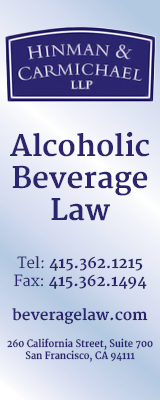FREE! Subscribe to News Fetch, THE daily wine industry briefing - Click Here
![Banner_Xpur_160x600---Wine-Industry-Insight[63]](/wp-content/uploads/Banner_Xpur_160x600-Wine-Industry-Insight63.jpg) |
 ALSO SPONSORED BY: 
Wine Industry Insight |
 |
Market Flux Flummoxes Best Of Intentions
Quickly changing economic conditions and consumer wine purchases have created an industry in rapid flux that has flummoxed even the best of projections for the coming year.
The resulting uncertainty has complicated investment and lending decisions, especially at the high end of the market.
HIGH-END MARKET ESPECIALLY HARD TO PIN DOWN
While scanner data covers nearly two-thirds of the wine sold in the United States, the results are skewed mostly toward lower price points.
Of late, higher price points have shown up among the fastest growing categories in scanned data, (See Wine Industry Insight article on this [$VIP]), but the higher the bottle price, the lower the scanner representation. Luxury brands ($50 to $100 per bottle and up) are not represented at all.
HIGH-END DATA DROUGHT INCREASES UNCERTAINTY
Because most information about high-end wine sales comes from anecdotal data lacking in any significant relevance, decisions about this sector as a whole entail a greater “seat of the pants” assessment.
Scanner data has the advantage of being an objective, third-party source of information, not subject to bias or changes by wineries, distributors or retailers.
By contrast, wines not tracked by scanners must be individually reported by private wineries whose actual sales can be distorted by accounting rules, or other considerations and cannot easily be independently verified.
Further, the data from these sources is private, closely held and not made available on a frequent basis like scanner data.
This means that investors and lenders, in the absence of better industry data, must apply even tougher standards to each individual winery.
SILICON VALLEY BANK: THE BEST HIGH-END DATA GAME IN TOWN
Silicon Valley Bank’s “2009 – 2010 State of the Wine Industry” remains the best source for high-end data. Based on surveys from more than 500 wineries in California, Oregon and Washington, SVB said that, “Price points below $35 are selling, but wines between $50 and $125 are in a “dead space,’ with only established labels selling.
“Companies are more pessimistic as their price points increase with $40-65 and >$90 the most concerned. Our own experience is that under $35 works for red wines (less for white), $35-50 is a gray area and $50-125 is a dead zone with only the best brands doing well. Ironically, wines that can sell for more than $125 to this point are selling out.”
RECENT MARKET UPTURN CONTRADICTS SVB DATA
SVB’s market study illustrates the challenges that even the best prognosticators must face in a rapidly changing economy.
SVB predicted, among other things that, “[T]he year will end essentially flat in terms of overall growth in the fine wine segment, and show modest growth in higher volume segments.
However, scanner data indicates substantial gains in every price category for three of the first four months of 2009. (See “April Domestic Wine Sales Up 9.5%, All Price-Points Gain [$VIP],” WII, May 4, 2009 for details.)
CAN INTELLIGENT EXTRAPOLATION OF SCANNER DATA FILL THE HIGH-END DEFICIT?
The nature of small, high-end, private wineries makes it unlikely that this price segment can ever have a steady, frequently updated and independent third-party source of sales data like that provided by scanner information.
What could fill that deficit? One would hope that someone is working on a way to extrapolate the highest-end scanner data price point ($20 and above) to provide a statistically significant measure of the total high-end market.







